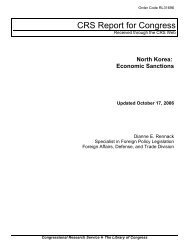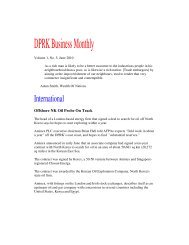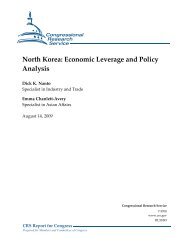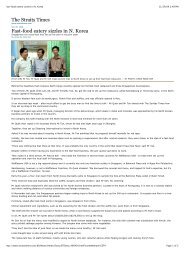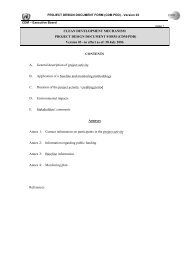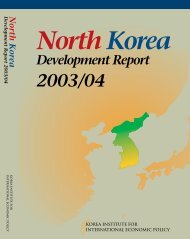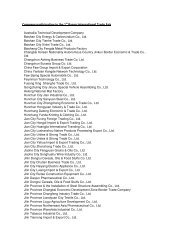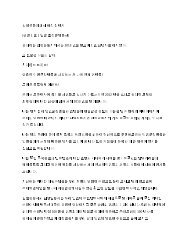North Korean Policy Elites - Defense Technical Information Center
North Korean Policy Elites - Defense Technical Information Center
North Korean Policy Elites - Defense Technical Information Center
Create successful ePaper yourself
Turn your PDF publications into a flip-book with our unique Google optimized e-Paper software.
D. FLOW OF INFORMATION<br />
George Kennan, the father of Sovietology, once remarked, “A totalitarian dictatorship<br />
can overnight turn into a most fragile society.” Because of the brittle nature of totalitarian<br />
regimes, the impact of information on them is unpredictable and, therefore, must be managed.<br />
Dictators rule by controlling the flow of information, factions garner power/influence by access<br />
to information, and the manipulation of public information in the form of ideology ultimately<br />
confers legitimacy on the regime. Therefore, more than any other society, totalitarian regimes<br />
adhere to the idiom “knowledge is power.”<br />
Internal <strong>Information</strong><br />
<strong>Information</strong> necessary to run the day-to-day affairs of the <strong>North</strong> <strong>Korean</strong> regime is highly<br />
compartmentalized and frequently monitored. 45 This leads to a system of half knowledge and an<br />
illusion of being informed. Those in top leadership positions have access to more sensitive<br />
information about the regime, but even the most senior leaders are restricted in the amount of<br />
access they can have on issues related to regime security.<br />
Kim Chong-il has taken great steps to ensure that he is the most informed member of the<br />
leadership and, at the same time, to restrict access to others. He began to institute an information<br />
management plan within the regime in the early 1970s when he assumed responsibility for<br />
running the party apparatus. At the heart of this architecture was the “10 principles to establish<br />
the party’s monolithic ideological system,” a set of rules that enforced obedience to the<br />
established Kim leadership. To guarantee the efficiency of this system, Kim Chong-il ordered<br />
that all documents be run through his office before being sent to other organizations, thus<br />
creating the informal network of communication and monitoring within the leadership. Because<br />
the channels for distributing internal information among the leadership bodies were contained<br />
within the KWP Central Committee apparatus, namely the General Affairs Department and the<br />
Organization Guidance Department, Kim was able to “sanitize” information to leaders above<br />
him and closely guard the amount of information let out to the wider elite. By the 1980s, Kim<br />
45 As the first generation leadership began to step down from leadership posts, there was an increase in the<br />
compartmentalization of the ruling elite into functional specialties. Before then, <strong>North</strong> Korea’s decision-makers<br />
rotated between party, government, and military positions. As key positions were monopolized by a core group of<br />
Kim loyalists, power was concentrated in a very small elite. After this cadre of elite were thinned out by purges<br />
and retirement, they were replaced by military professionals, technical experts, and party specialists. Under Kim<br />
Chong-il, these military professionals have begun to assume positions in growing numbers within the party and<br />
state apparatuses. For an examination of the restructuring of the <strong>North</strong> <strong>Korean</strong> elite, see Lee Chong-sik, “The<br />
1972 Constitution and Top Communist Leaders,” in Suh and Lee (eds.) Political Leadership in Korea. (Seattle,<br />
WA: University of Washington Press, 1976).<br />
II-29



